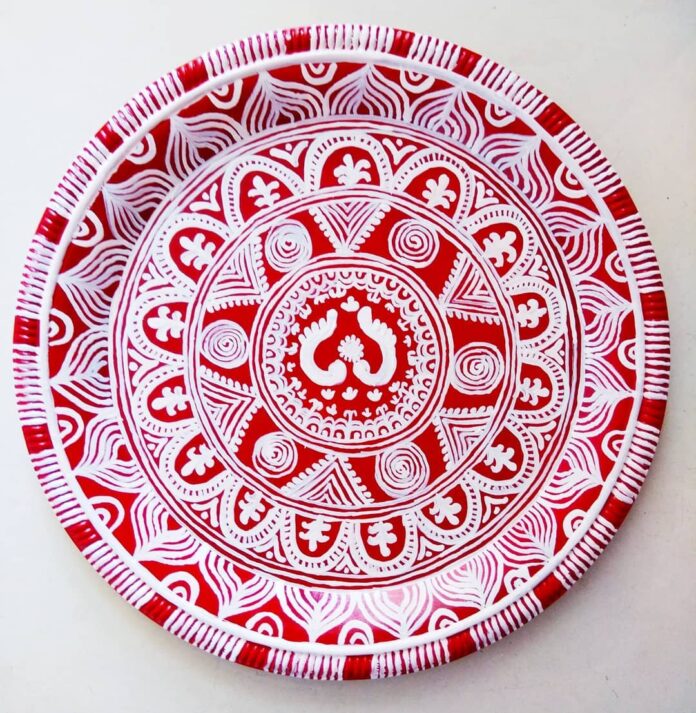Uttarakhand, nestled in the lap of the majestic Himalayas, is not only known for its breathtaking landscapes but also for its rich cultural heritage. One of the traditional art forms that flourishes in this region is the Uttarakhand Aipan painting, a form of floor art that reflects the vibrant spirit and artistic prowess of the local communities. In this blog, we will delve into the origins, techniques, motifs, and significance of Uttarakhand Aipan painting, exploring how this age-old craft continues to thrive in the modern era.
Origins and History:
Aipan painting, also known as Alpana or Mandana in different parts of India, has deep roots in the cultural and spiritual practices of the region. The word “Aipan” is derived from the Sanskrit words “Aasan” (seat) and “Pan” (drawing), suggesting its connection to creating a sacred space. Historically, Aipan paintings were crafted during festivals, weddings, and other auspicious occasions to invoke blessings and ward off evil.
Techniques:
Materials:
Traditionally, Aipan paintings are created using simple, locally sourced materials. The base is often made of a mixture of cow dung and mud, providing a smooth and adhesive surface. White rice paste or rice flour is then used to draw intricate patterns.
Drawing Process:
The artist begins by drawing a series of dots or a grid on the prepared surface, creating the framework for the design. The motifs are then meticulously filled in, with freehand precision, using a pointed stick or a small cone made of rolled-up leaves. The result is a stunning symmetrical pattern that often includes geometric shapes, floral designs, and symbols of good luck.
Motifs and Symbolism:
Uttarakhand Aipan paintings are characterized by a wide array of motifs, each carrying its own significance. Common elements include:
Surya (Sun): Symbolizing life, energy, and prosperity, the depiction of the sun is a common motif in Aipan paintings.
Chakras (Circular Designs): These intricate circular patterns represent cosmic energy and balance.
Peacock Feathers: A symbol of beauty and grace, peacock feathers are often incorporated, adding a touch of nature to the artwork.
Swastika: An ancient symbol of auspiciousness and good fortune, the swastika is a recurrent motif in Aipan paintings.
Significance and Rituals:
Aipan painting is not merely a decorative art form; it holds deep cultural and spiritual significance in the lives of the people of Uttarakhand. It is believed that these intricate patterns invite positive energy and protect the household from negative forces. During festivals and ceremonies, Aipan paintings are created at the entrances of homes, temples, and other sacred spaces, serving as a visual representation of the community’s collective identity.
Preserving Tradition in the Modern Era:
While traditional Aipan paintings continue to be an integral part of religious and cultural rituals, contemporary artists are finding innovative ways to adapt and evolve this ancient craft. Many artisans are now exploring new mediums, such as fabric and canvas, to create portable Aipan artworks that can be displayed and appreciated beyond the confines of the floor.
Conclusion:
Uttarakhand Aipan painting is a testament to the rich cultural tapestry of the region. Its intricate designs, vibrant colors, and deep symbolism make it a captivating art form that has withstood the test of time. As we appreciate the beauty of Aipan paintings, let us also recognize the efforts of the artists who, with dedication and skill, continue to carry forward this ancient tradition, bridging the gap between the past and the present.


